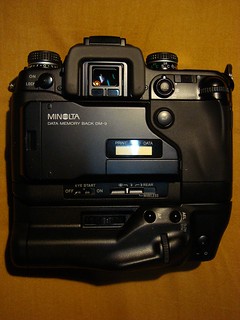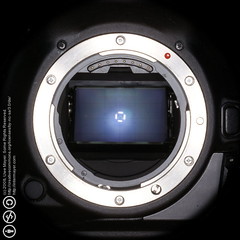Difference between revisions of "Minolta Dynax 9"
Hanskerensky (talk | contribs) m (→Links: Re-Instated Link URL, Redirected Link URL to archived version) |
(Reworded to get rid of Top Gear style.) |
||
| Line 1: | Line 1: | ||
{{stub}} | {{stub}} | ||
{|class=floatright | {|class=floatright | ||
| − | + | | | |
{{Flickr_image | {{Flickr_image | ||
|image_source= http://www.flickr.com/photos/intermayer/2463050517/in/pool-camerawiki | |image_source= http://www.flickr.com/photos/intermayer/2463050517/in/pool-camerawiki | ||
| Line 11: | Line 11: | ||
}} | }} | ||
|- | |- | ||
| − | + | | | |
{{Flickr_image | {{Flickr_image | ||
|image_source= http://www.flickr.com/photos/moto44/8251354201/in/pool-camerawiki | |image_source= http://www.flickr.com/photos/moto44/8251354201/in/pool-camerawiki | ||
| Line 20: | Line 20: | ||
|image_rights= wp | |image_rights= wp | ||
}} | }} | ||
| − | |||
|- | |- | ||
| − | + | | | |
{{Flickr_image | {{Flickr_image | ||
|image_source= http://www.flickr.com/photos/intermayer/2941472553/in/pool-camerawiki | |image_source= http://www.flickr.com/photos/intermayer/2941472553/in/pool-camerawiki | ||
| Line 32: | Line 31: | ||
}} | }} | ||
|} | |} | ||
| − | The '''Dynax 9''' is | + | The '''Dynax 9''' is an auto-focus [[35mm]] [[SLR]] camera made by [[Minolta]]. It is also known as the '''Maxxum 9''' and (Alpha 9) '''α-9'''. It has a Minolta A-type bayonet lens mount. |
| − | It is a successor to the [[Minolta Dynax 9xi|9xi]] and [[Minolta Dynax 800si|800si]]. | + | It is a successor to the [[Minolta Dynax 9xi|9xi]] and [[Minolta Dynax 800si|800si]]. The camera is robust, with rubberized and weatherproof controls. Later versions include the rare 9Ti with a titanium body. The controls are similar to those of the [[Minolta Dynax 600si / Maxxum 600si|600si]]. |
| − | The | + | The camera has a [[focal plane shutter]] running from 30s - 1/12000s, with flash synch at 1/300s. There is a built-in flash. |
{{Flickr_image | {{Flickr_image | ||
Revision as of 17:19, 14 August 2018
| ||
| ||
|
The Dynax 9 is an auto-focus 35mm SLR camera made by Minolta. It is also known as the Maxxum 9 and (Alpha 9) α-9. It has a Minolta A-type bayonet lens mount.
It is a successor to the 9xi and 800si. The camera is robust, with rubberized and weatherproof controls. Later versions include the rare 9Ti with a titanium body. The controls are similar to those of the 600si.
The camera has a focal plane shutter running from 30s - 1/12000s, with flash synch at 1/300s. There is a built-in flash.

|
| Maxxum 9 image by Anthony Chang (Image rights) |

|
| α-9 with battery grip image by moto44 (Image rights) |
Photos
Links
- Maxxum 9 review on Photographic Central
- Konica/Minolta's Dynax 9 spec page (archived) formerly published by Konica Minolta
| Japan Camera Grand Prix | |
|---|---|
| Camera of the year
1984: Nikon FA | 1985: Minolta α-7000 | 1986: Canon T90 | 1987: Canon EOS 650 | 1988: Kyocera Samurai | 1989: Nikon F4 | 1990: Canon EOS 10 | 1991: Contax RTS III | 1992: Pentax Z-1 | 1993: Canon EOS 5 | 1994: Minolta α-707si | 1995: Contax G1 | 1996: Minolta TC-1 | 1997: Nikon F5 | 1998: Pentax 645N | 1999: Minolta α-9 | 2000: Canon EOS-1V | 2001: Minolta α-7 | 2002: Canon EOS-1D | 2003: Canon EOS-1Ds | 2004: Nikon D70 | 2005: Konica Minolta α-7 Digital | 2006: Nikon D200 | 2007: Pentax K10D | 2008: Nikon D3 | 2009: Canon EOS 5D Mark II | 2010: Olympus Pen E-P1 | 2011: Pentax 645D | 2012: Nikon D800 | 2013: Sony DSC-RX1 | 2014: Nikon Df | 2015: Canon EOS 7D Mark II | 2016: Sony α7R II | 2017: Olympus OM-D E-M1 Mark II | 2018: Sony α9 | 2019: Lumix S1R | 2020: Sony α7R IV | 2021: Sony α1 | 2022: Nikon Z9 | 2023: Sony α7R V Special Prize Editor | |


